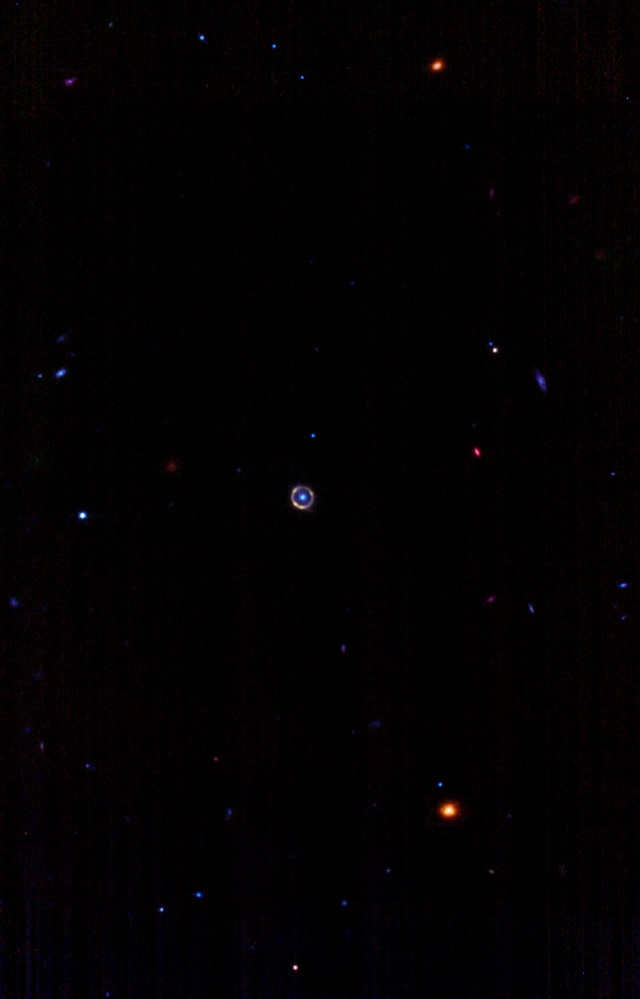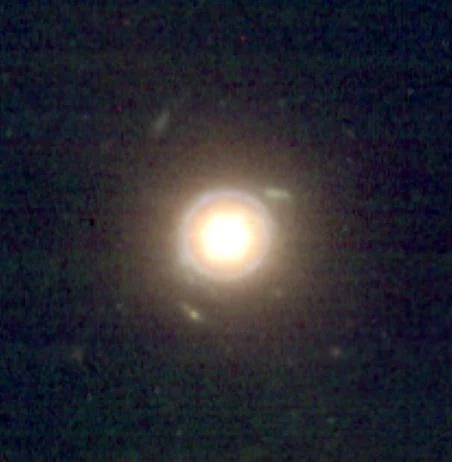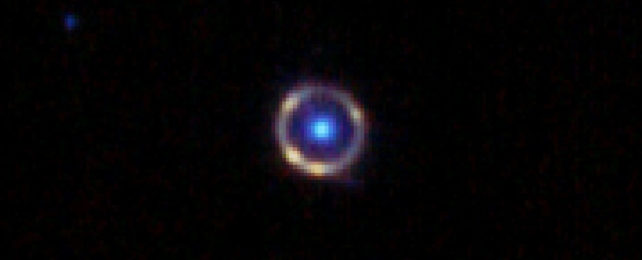Since the first James Webb Space Telescope images were released in July, our feeds have been flooded with mind-bogglingly gorgeous photos of space – from insanely detailed images of Jupiter to the most distant known star.
Now, Webb has done it again, this time capturing an almost perfect Einstein ring whose light has traveled roughly 12 billion light-years to reach us. And we can't stop staring.
You can see the colorized image, which was shared by astronomy grad student Spaceguy44 on Reddit, below.
As Spaceguy44 explains on Reddit, an Einstein ring occurs when a distant galaxy has been magnified and wrapped into an almost-perfect ring by a massive galaxy in front of it.
The galaxy in question is called SPT-S J041839-4751.8.
Here's a more distant view of it, also processed by Spaceguy44:

According to Spaceguy44, we wouldn't be able to see this galaxy at all if it wasn't for the Einstein ring.
And the presence of Einstein rings, in addition to looking beautiful, allows us to study these otherwise almost impossible to see galaxies.
This process is known as gravitational lensing, and it's an effect predicted by Einstein – hence the name.
The effect only happens when the distant galaxy, the closer magnifying galaxy, and the observer (in this case the Webb space telescope) line up.
If you want to try it for yourself, Spaceguy44 says that the stem and base of a wine glass create a similar effect. Try doing it with a page of a book and seeing the word zoomed in.
Although catching sight of Einstein rings is rare, it's not unheard of. Hubble previously captured images of spectacular Einstein rings.
This isn't even the first time Webb has captured the Einstein ring of SPT-S J041839-4751.8.
The space telescope's Near Infrared Camera (NIRCam) captured the same region back in August, and Spaceguy44 colorized and released it then, too.
But the image, below, wasn't as clear.

In the latest image, the data was captured by Webb's Mid-Infrared Instrument (MIRI) camera, and downloaded from the MAST portal.
The image uses three different filters. Red is the F1000W filter, which captures wavelengths of light at 10µm. Green is the F770W filter, for 7.7µm wavelengths. Blue is the F560W filter which picks up 5.6µm wavelengths.
The images were then aligned and colorized by Spaceguy44 using astropy, and further processing was done in GIMP.
Editor's note (29 August 2022): This article has been updated to change reference of 'light-years away' to 'light travel time'. Due to the vast distance the light from this galaxy has traveled to reach us, it is undoubtedly now much further away due to the expansion of the Universe.
